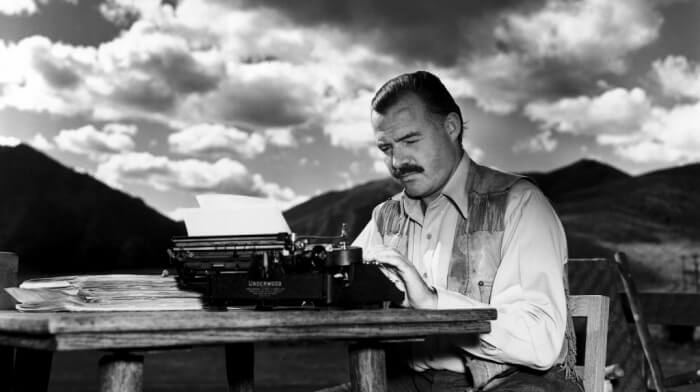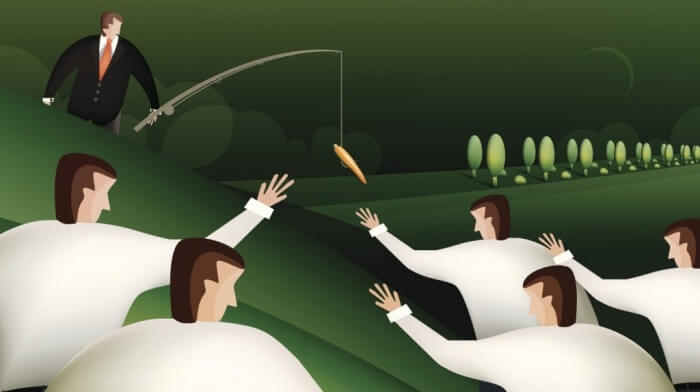Business thrives on the creativity of its staff, but giving people freedom to think doesn't always deliver the best results. Sometimes the greatest ideas come from working with constraints.
Why Structure Is The Best Friend Of Creativity
Business thrives on the creativity of its staff, but giving people freedom to think doesn't always deliver the best results. Sometimes the greatest ideas come from working with constraints.

Structures help me achieve the stuff I want to achieve. Without them, I generally fall short on my ambitions and aspirations. This has become all the more pertinent with the recent arrival of our first child.
My life is much busier and I’ve found that when I do sit at my desk and look at what needs to be done, I’m drawn to the quick wins - going to meetings, responding to emails, phone calls, texts, tweets.
All this is fine in the short term but I tend to find the same big projects and ambitions make a repeat appearance on my ‘to do’ list each week. Building in structures to my day has become imperative to help me find time to be creative and develop both my work and my life.
Just in the same way an individual’s creative process needs structure, so do businesses; in order to drive innovation and achieve the best results. Structure enables creativity. As Charles Eames famously quotes: “design depends largely on constraints”.
"To embed new ways of working, change behaviours and establish a creative environment, structures are an absolute necessity"
Constraints and structures exist all around us for a reason. For example, the 26 letters of the alphabet have allowed the world of literature and music to be endlessly expressive.
Author Ernest Hemingway once bet some friends that he could write an entire story in just six words. Seems impossible. But what the enforced structure does is push you to your creative limits. His story?
For sale: baby shoes, never worn.
The constraint has fuelled the idea.
Upping your Elvis is a creative leadership capability business. We run workshops to help people become more confident around their creative potential and challenge the status quo of business. All our clients are after a more creative culture.
When we start work with a new client, they always come with their own established and familiar ways of workings. To successfully embed new ways of working, change behaviours and establish a creative environment, structures are an absolute necessity.

Heminway slapped an apparently impossible contraint on himself and created what he described as his "greatest work"
A good structure is one that’s difficult to wriggle out of and ultimately makes change inevitable. We all have a limited amount of willpower.
Harvard happiness expert Shawn Achor has a great ’20 second rule’. His book recounts how by moving his guitar to be in immediate reach instead of 20 seconds away made him practice more. He no longer needed self-control to create the habit he wanted. In the same way one can drop a bad habit by making it physically harder to execute.
An example of a recent effective behaviour change structure would have to be the blanket move to charge 5p for plastic shopping bags. It tackled a behaviour that’s been the established norm for decades and since its levy Tesco has seen a drop of 80% in its bags being taken home.
Here are are some tips to think about when designing structures:
Experiment
Don’t be precious; come up with a lot of structures that you think might work but treat it like an experiment. Some will work and some will fall flat on their face. The important thing is that you regularly review them and you’re not attached to any. Sometimes there will be surprising results.
At eBay, one day every month, the IT department bans all meetings. You would think this would prevent ideas without collaboration, but quite the opposite happens. Scott Seese, eBay’s CEO, says that on that day, “all people are allowed to do is think’. Ideas are noted and brainstormed the next day, voted on by staff and the best are implemented.
Carrot and Stick
I believe you create the most impact with a combination of motivating and policing structures. You need to make some fun and motivating but equally you need others that force people’s hands (like salary reviews). Create a balance.
Waitrose is a cooperative, so staff loyalty comes easier than for most. However, the company still goes to great lengths to draw out and support people’s personal interests to create an environment where people feel comfortable being themselves.
There is a thriving club culture and if, for example, you want to learn piano, Waitrose will pay half the cost of the lessons. The salary review consequently doesn’t feel so heavy handed.
Leaders First
Whomever is put in charge of implementing structures must make the run to the top. Everyone emulates the leaders and their behaviour so it’s imperative that the leaders are the first to engage with any new structure and advocate it.
Yvon Chouinard Patagonia’s founder eats a healthy lunch with his staff every day. Encouraging social interaction, healthy eating and time away from the screen which energises and motivates his team.
Get Creative
If you want structures that encourage and enable a creative culture then the structures themselves need to embody that ambition. Get creative. The structures should delight and energise. Use the toilets to communicate key messages, employ a graffiti artist to write up winners’ names on the office walls, employ a flash mob to announce a new structure.
The more surprising and unique they are the more likely they’ll work. For example, Google make a healthy waiting time for its famous free lunch a corporate strategy; it fosters creativity among employees. Dan Cobley, MD of Google UK explains “we know people will chat while they’re waiting. Chats become ideas, and ideas become projects.”
Structure and creativity, the very best of friends.
Jim Lusty is a partner at Upping Your Elvis, specialists in Creative Leadership
Thanks for signing up to Minutehack alerts.
Brilliant editorials heading your way soon.
Okay, Thanks!



